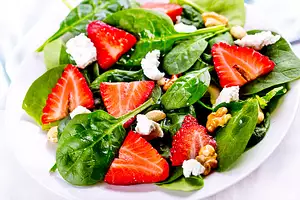There are many different areas in your refrigerator, and each has its own special use and function. Learning how to best use each feature will help keep your fridge organized and keep your food fresher. This will not only help you eat better, but will save you money because you will end up throwing away less food and wasting less energy.
First, it is important to remember that your refrigerator needs to be kept at a certain temperature, or within a certain range, to keep foods fresh. Colder temperatures help to prevent the growth of bacteria that spoils food or makes you sick.
Experts recommend keeping the fridge at 40 degrees Fahrenheit or lower, for best results. Your freezer should be kept at 0 degrees Fahrenheit. Keep in mind that when you set your fridge for 40 degrees, you might find that the temperature in different areas of the fridge may vary, depending on how your fridge is designed.
Learn where to store different foods for best results. While you want to keep your freezer tightly packed, don’t overstuff your refrigerator because cold air has to properly circulate in order to have the refrigerator work properly.
1. Freezer: Your freezer is the part of the refrigerator intended for storage of frozen foods. This is where you keep ice, frozen meats, frozen fruits and veggies, frozen leftovers and more. When storing foods in the freezer, make sure they are properly wrapped to prevent freezer burn. Pack the freezer tightly to optimize your energy use and keep your bills down. Don’t freeze foods in glass jars, they may crack. Use freezer bags or stackable plastic containers.
2. Doors: Keep in mind that the doors are the warmest part of the refrigerator. Only keep foods here that are more resistant to spoiling. This often includes condiments or juices that need to be kept cool, but not spoil with temperature fluctuations. Always check shelf life of condiments, and throw them away when they reach their expiration date. Keep milk, eggs and other dairy products off of the doors of your refrigerator.
3. Top Shelves: The most consistent temperatures in most refrigerators are found on the top shelves. This is where you want to store the foods that you will not cook. Foods like leftovers, drinks, and grab-and-go foods like hummus, deli meat or tortillas can be stored here. This is also a great place to store herbs in an upright vase to keep them as fresh as possible and easily accessible.
4. Lower Shelves: This is the best place in your refrigerator to keep raw meats, eggs, seafood and anything that may spoil easily. Store raw meat separately from other foods to prevent spreading bacteria. Always keep meat in its original store packaging until ready to use. Clean this area of your refrigerator regularly.
5. Crisper Drawers: Crisper drawers are specially designed to keep fruits and vegetables from drying out. But, it is important to know that you can’t simply toss all the fruits and veggies into the drawer and expect them to stay fresh. Because certain fruits produce ethylene to help them ripen (especially apples, peaches, plums, pears and cantaloupes), they can cause premature spoilage of nearby veggies and other fruits. For best results, use one drawer for fruits and one for veggies. Also, keep the veggies dry for best results. When they are washed ahead of time and retain too much moisture, they can become rotten sooner. Use paper towels in the storage bags to soak up excess moisture and help fruits and veggies stay fresher longer.
6. Top of the fridge: This is not a good place to store any foods. This space seems to be convenient and out of the way, but, in fact, it gets pretty hot up there and can cause foods to spoil quickly. Instead of storing food up there, make good use of the space by storing cookbooks or appliances you don’t need to keep handy.
7. Do you need to refrigerate? There are some foods that you should not store in the refrigerator, including tomatoes, onions, potatoes, and squash. Avocados are fine stored on the counter, but you can put them in the fridge to slow the ripening process, if needed. There are some foods that you can opt to refrigerate or not, including nuts, nut butters and nut flours, if you won’t be using them quickly. Also, oils that are low in saturated fats may do better when refrigerated. This would include canola oil, safflower oils, and olive oils.
Understanding the best way to use your fridge can cut your grocery bills by wasting less food, and help prevent foods from spoiling.
SOURCES: https://www.womenshealthmag.com/nutrition/fridge-organization-infographic; Image courtesy of Ambro / FreeDigitalPhotos.net










Comments